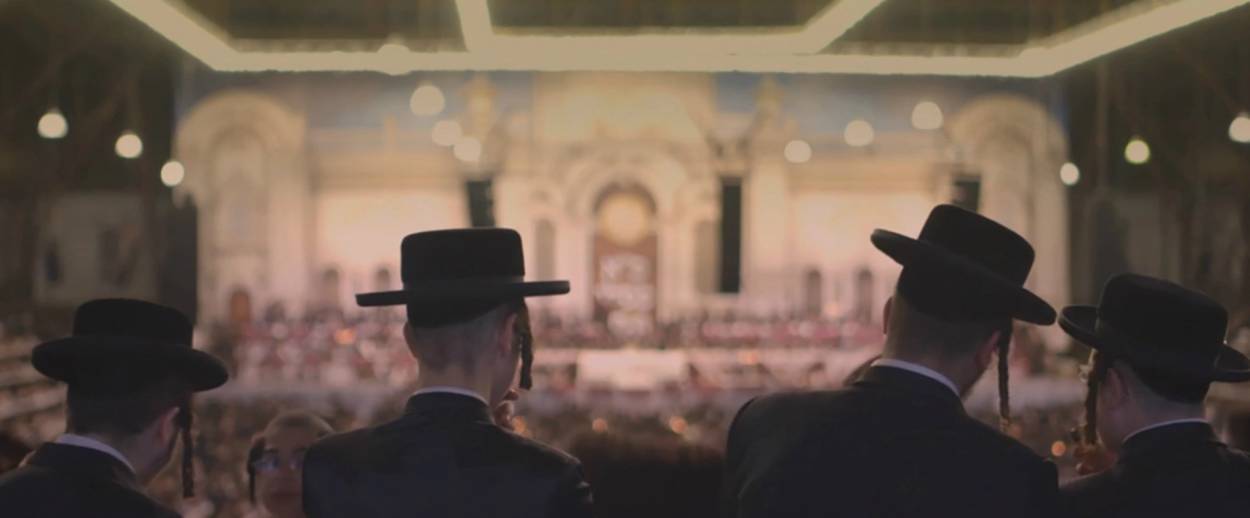A Town Divided
A new documentary explores the bitter divisions in a New York town between the large Hasidic community and secular local activists who want to stop their Hasidic neighbors from expanding




A documentary that premiered in New York City this week at the DOC NYC film festival, captures the conflict and drama surrounding Kiryas Joel, a village occupying a square mile within the town of Monroe in upstate New York that became one of the fastest-growing Hasidic communities in the United States. When the secular residents of the larger township learn of Kiryas Joel’s desire to annex adjacent land to address its population growth it sets off a turf war.
At the heart of the division portrayed in City of Joel, directed by Jesse Sweet, are two communities with polarized worldviews trying to protect their way of life. On the one side is KJ (or Kiryas Joel), a community of 22,000 Satmar Hasidim founded in the 1970s after the community was priced out of Brooklyn by rising real estate prices. Their rebbe, Joel Teitelbaum, sought to establish a rural settlement in which the congregants could be secluded from the outside world. Still rebuilding from the ashes, many families left Williamsburg for Monroe, seeking a place to grow for a community, many of whose ancestors perished in the Holocaust.
On the other side are local activists who form a coalition called United Monroe. The activists want to protect natural resources, such as wildlife, trees, and water as well as their hold on political power, which has been significantly weakened by the Hasidim’s ability to act as a unified voting bloc. Strong personalities from both sides are featured in the documentary, each side making valid arguments in interviews.
A leading member of United Monroe says in the film that there’s no separation between church and state in KJ, while a Hasid activist counters that the founders had intended that provision to protect religion, not to protect the government.
John Allegro, a Monroe resident who sells homemade hot sauce, says he moved there for land, privacy, and quiet. “Imagine another 40,000 people; it would be problematic,” he says in the film.
While the secular locals are Democrats and the KJ Hasidim Republicans, the source of their difference doesn’t map onto a standard partisan division. The Hasidim feel the opposition for an annexation for more land (507 additional acres) to accommodate growing families is driven by hatred and anti-Semitism. The locals say it has nothing to do with animus towards Jews, that by opposing large multifamily units they’re just protecting their quality of life.
The film makes it clear that for the Satmars, religion is not just a private affair. A large sign greeting visitors in KJ lays out their traditions and customs, asking for others to respect their values, such as dressing modestly, using appropriate language and maintaining gender separation in all public areas. Therefore, one wonders if it was another group seeking to expand in the area that was less visible, less religious, less particular in their ways, whether the opposition would be so vehement. This is a particularly sore point for this community of survivors.
The battle centers around a city board vote on whether to allow the petitioned annexation. The stakes and emotions run high as members of United Monroe try to gather votes and strengthen their position. All the while, the Hasidim maintain they have a constitutional right to practice their religion and grow as a community outside of the stifling city, where the other half of their congregants remains.
Harley Doles, an evangelical Christian and elected supervisor for the town, is a staunch supporter of the KJ residents, trying to protect their faith-based democratic rights. “Monroe is where the clash of civilizations is taking place more here than anywhere else in America,” Doles says in the film. “Here was an opportunity for me to do good.” United Monroe supporters accuse Doles of being a plant recruited by the Satmars.
In one scene, Max Hauer, a Satmar and former KJ resident, meets with hot sauce-seller Allegro and argues that while the Hasidim make up 50 percent of Monroe’s population they would live in less than two square miles, even after annexation, in a town that consists of 22 square miles.
“Do you really believe they want to throw you out of your home and take over the entire town?” Hauer asks Allegro, who responds with concerns about pollution and excess traffic.
“I don’t think the strong opposition of annexation stems from anti-Semitism,” Hauer says. “But what I do believe is that the tensions that are caused by all these events translate into overt, explicit anti-Semitism.” As evidence of that, he reads off anti-Semitic comments made on the internet by upstate New York residents about the Jewish community in Monroe.
Nevertheless, “America has been the best thing that has ever happened to Orthodox Jews,” Hauer says in the film.
Upcoming festival screenings include the UK Jewish Film Festival, screening Nov. 20, and the Jerusalem Jewish Film Festival, screening Dec. 1 and 5. For more info visit the film’s website.
Sara Trappler Spielman is a freelance writer in Brooklyn.